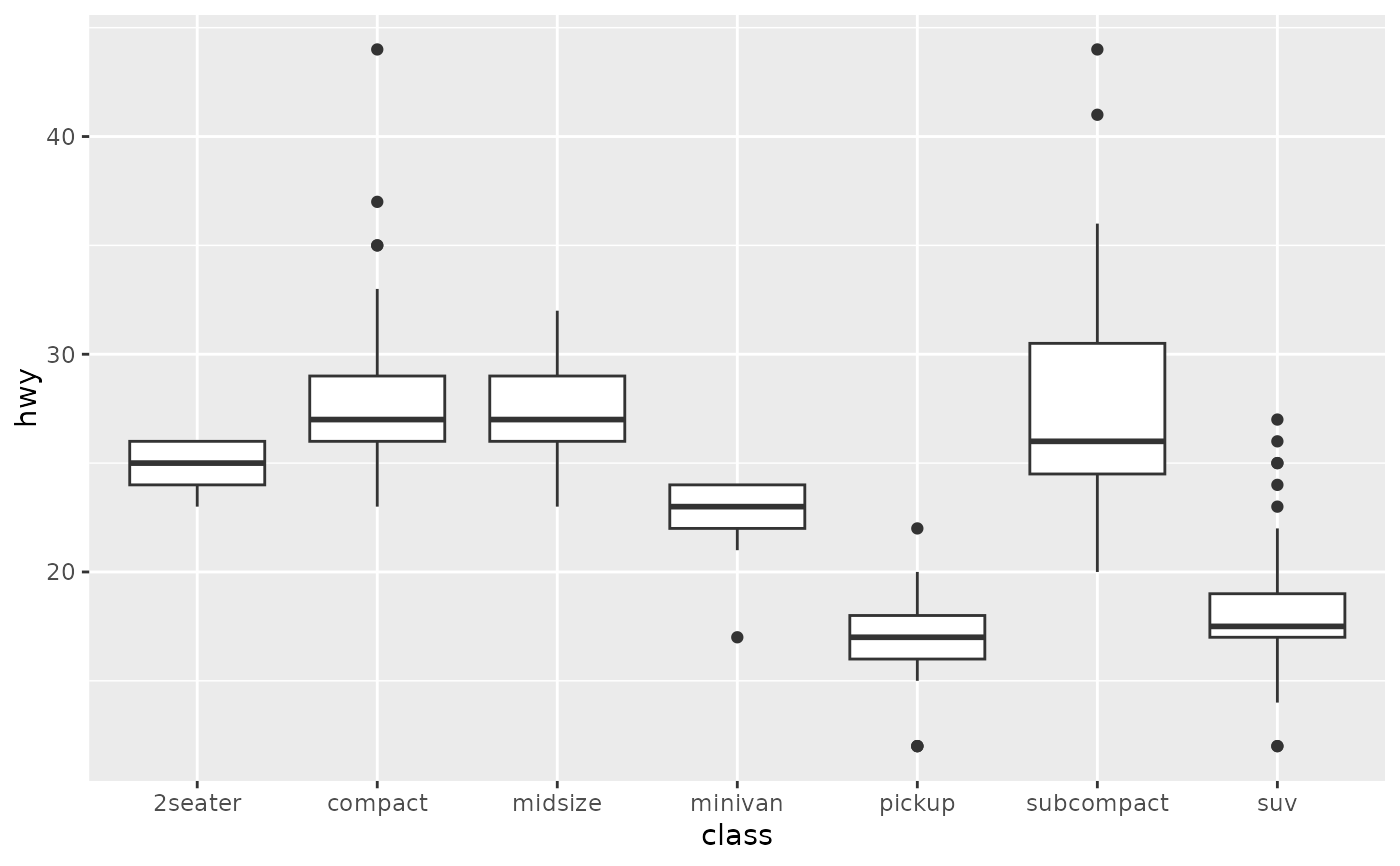

Main="Different boxplots for each month", In our dataset, month is in the form of number (1=January, 2-Febuary and so on). Month can be our grouping variable, so that we get the boxplot for each month separately. The function boxplot() can also take in formulas of the form y~x where, y is a numeric vector which is grouped according to the value of x.įor example, in our dataset airquality, the Temp can be our numeric vector. Names = c("ozone", "normal", "temp", "normal"), Main = "Multiple boxplots for comparision", boxplot(ozone, ozone_norm, temp, temp_norm, We use the arguments at and names to denote the place and label. Now we us make 4 boxplots with this data. Temp_norm <- rnorm(200,mean=mean(temp, na.rm=TRUE), sd=sd(temp, na.rm=TRUE)) Ozone_norm <- rnorm(200,mean=mean(ozone, na.rm=TRUE), sd=sd(ozone, na.rm=TRUE)) # gererate normal distribution with same mean and sd Let us also generate normal distribution with the same mean and standard deviation and plot them side by side for comparison. Let us consider the Ozone and Temp field of airquality dataset. We can draw multiple boxplots in a single plot, by passing in a list, data frame or multiple vectors. names-a vector of names for the groups.group-a vector of the same length as out whose elements indicate to which group the outlier belongs and.

#Box and whisker plot r code#
$ Solar.R: int 190 118 149 313 NA NA 299 99 19 194. The R graph gallery tries to display some of the best creations and explain how their source code works. Let us use the built-in dataset airquality which has “Daily air quality measurements in New York, May to September 1973.”-R documentation. You can also pass in a list (or data frame) with numeric vectors as its components. The boxplot() function takes in any number of numeric vectors, drawing a boxplot for each vector. In R, boxplot (and whisker plot) is created using the boxplot() function.


 0 kommentar(er)
0 kommentar(er)
